NOTE: This article discusses an outdated version of Capture One. To learn more about our latest version, click here.
Thinking of making the switch to Capture One Pro?
Lukas Piatek, photographer and founder of photography community LOOKSLIKEFILM, says that once you get the hang of Capture One’s photo editing software, there’s no going back.
“I am making the switch to Capture One right now after spending years in Lightroom,” says Piatek. “It is undoubtedly overwhelming once you start Capture One for the first time, but once you get the hang of it, the power of Capture One is undeniable.”
While Piatek is primarily a wedding photographer, his community of close to 50k followers was founded to share inspiring, fantastic work across all fields and foster the photography journey. He asked a few members to play around with Capture One and share their first impressions of how the photo editing software works for their images and helps them achieve their unique looks and visions.

First impressions
“There is a learning curve for sure, but the interface was pretty easy. I have a pretty well established personal preset I use in Lightroom, so I had to work for these edits to get them pretty close to my typical style. Presets are huge in my workflow, so having that capability will be so much easier once established in Capture One” – Vicki Moyer
Capture One:
We know that consistency is key to the work of many photographers, and presets makes this much easier! In Capture One, presets are known as Styles. They function in a similar way with Preview and Apply features, and you can even apply Styles as layers to tweak opacity. Build your own, or purchase Styles from us or other Style creators. There are packs for every look and vision.
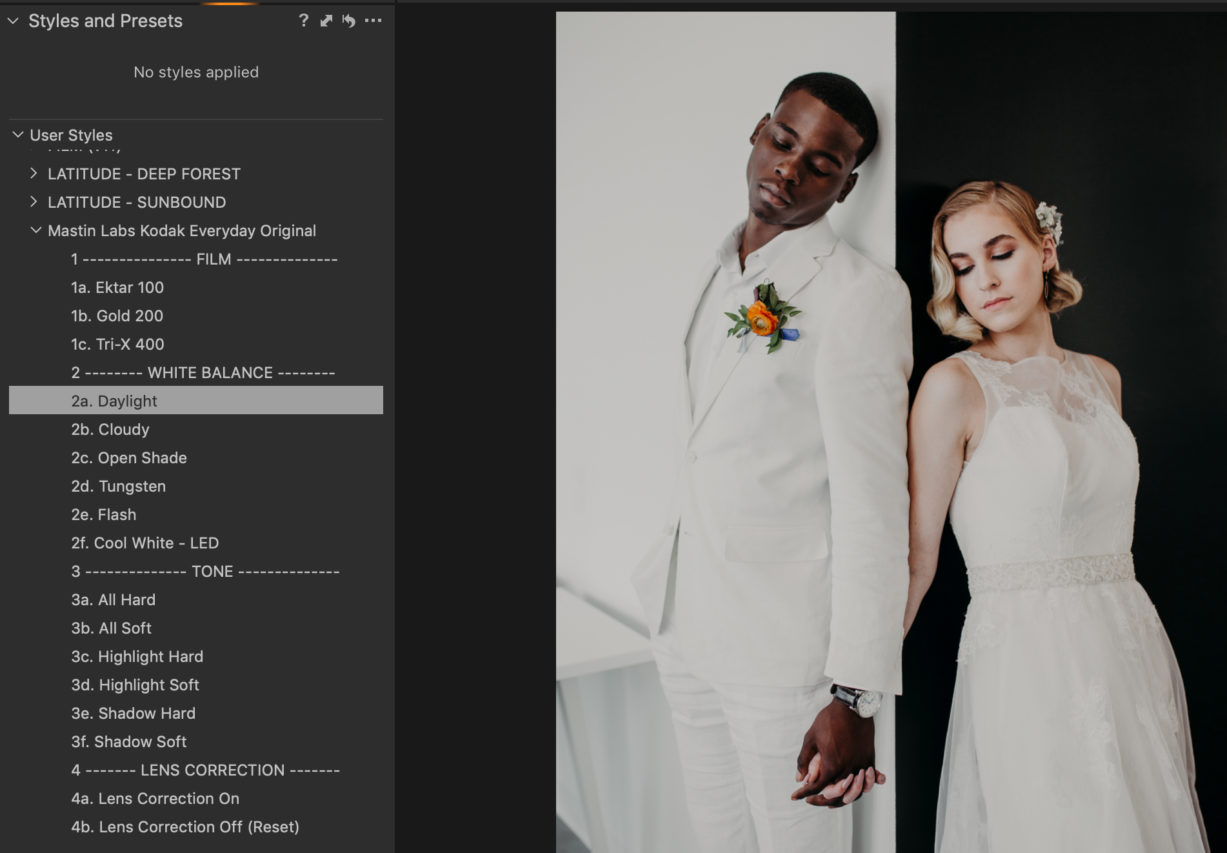
“I really loved using Capture One. The handling of color and grain seems much better than in Lightroom. Levels and especially auto levels are fantastic. Highlights and shadows seem to be controlled in a much more intuitive way as well. I am tempted to switch so my biggest question is Capture One confident enough that I could process just as fast as in Lightroom once I learn the platform.” – John Barwood
Capture One:
There’s always a learning curve with software – with Capture One we’re confident that you’ll be up to speed in no time. Capture One was originally designed for large-volume studio photographers and has since evolved into a highly customizable software built to accommodate any photographer’s workflow. You can create your own, intuitive interface with only the tools you need and set up keyboard shortcuts to make your workflow faster. You’ll be surprised at how much you can customize for a super-efficient, accelerated workflow.
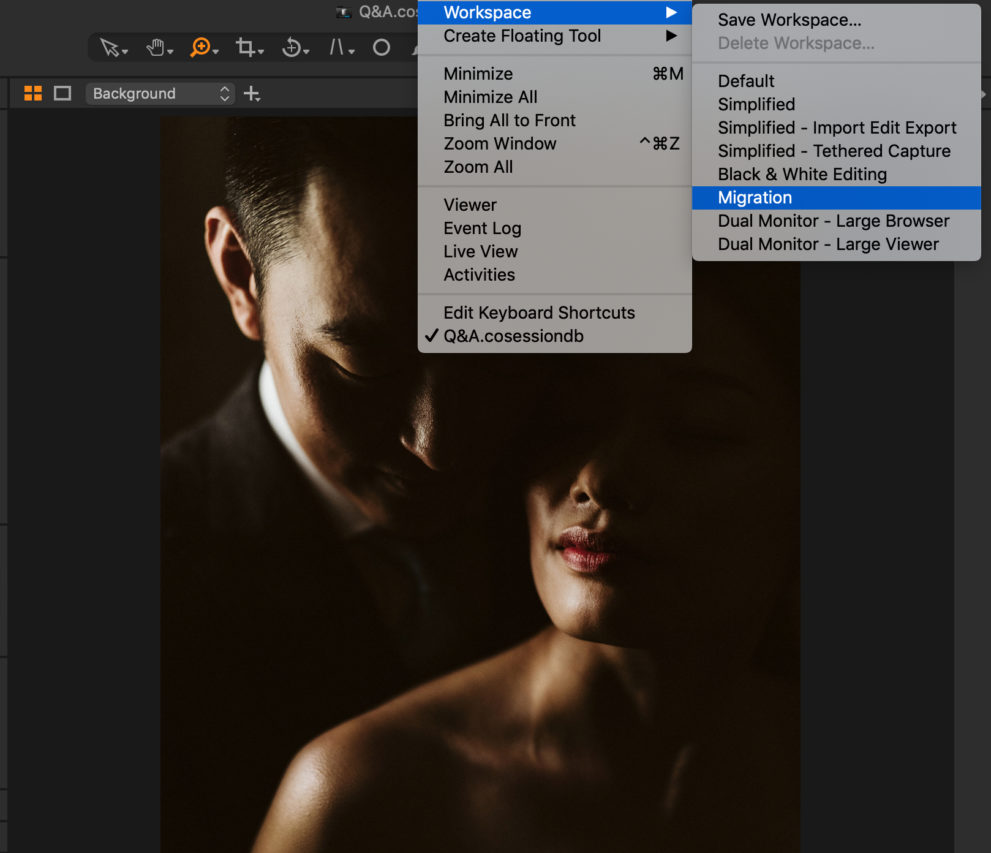
“I use multifunction peripherals, so I essentially have 30 buttons at my fingertips over both my hands and have these all bound to a specific control in Lightroom which allows me to process very quickly. Can I do this in Capture One? ” – John Barwood
Capture One:
Yes! In Capture One you can set your own shortcuts or edit existing ones. Palette Gear and Tangent Panels are also supported, providing endless options for additional controls of Capture One.
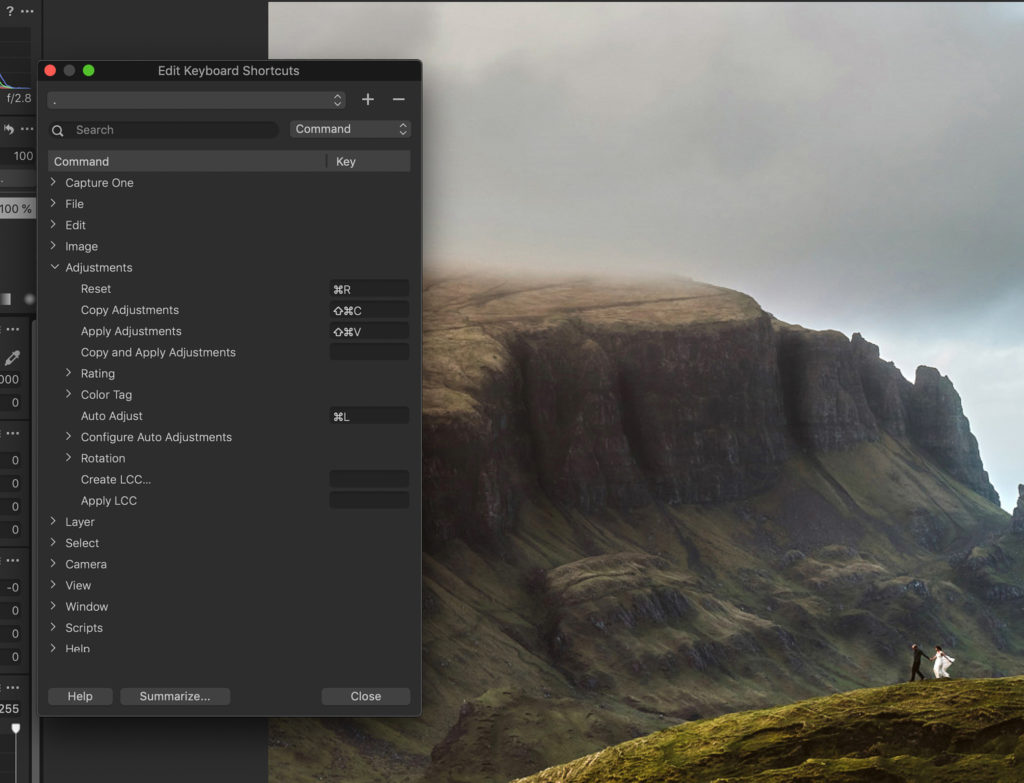
“Is there a way to copy only certain adjustments and paste them onto a whole batch? Say, for instance, I want to synchronize the photos just on White Balance, even though I have already changed the exposure for them individually? This would be a major thing for me, as I am doing mostly batch editing. Looking forward to playing around with Capture One more! Thank you for giving me the opportunity to broaden my horizons when it comes to digital photo editing! ” – Martjin Roos
Capture One:
Sure thing. Besides the adjustments clipboard where you can select which adjustments you want to copy and apply, there is a little double-sided arrow in the top right of each tool. That is the tool-based copy function. If you click it, it opens a dialog where you can select which parts of the tool you want to copy. However, the easiest way to synchronize a single tool adjustment across multiple images is to do the following:
1. Select all images you want to synchronize, including the one you are synchronizing from
2. Make sure the image you want to synchronize from is highlighted in the selection of images (it should have a thicker border, otherwise just click on it)
3. Hold down shift and click the little double-sided arrow
All adjustments from that tool alone are now applied to all the images
For this to work you need to make sure that ‘Image > Edit All Selected Variants’ is enabled. It is by default, but sometimes users turn this off by mistake.
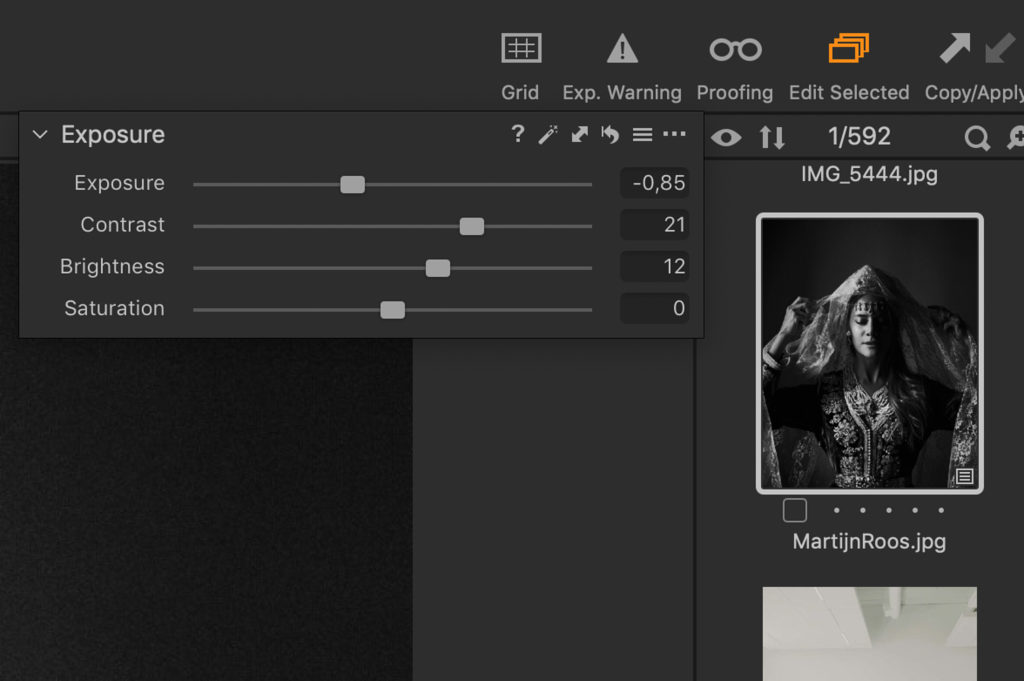
“I’ve been thinking about switching from Lightroom to C1 for quite some time, and a few times I tried to fall in love with C1 as I heard so many positive things about it. Somehow, it never worked out. With C1 Pro 12 I tried again, and finally, I’m seeing why so many photographers love to edit in C1 – it feels to me like I can edit colors in a way more detailed way. I still find it hard to get my look from Lightroom carried over, but I’ll do my best and try. What I love a lot about C1 already is how fast I can export all the several versions of an image that I need for my clients, my website, social media. All in one step, that’s such a game changer when it comes to time.
Something I still have to deal with is getting my colors exactly the way I want them to, but as in LR, I think this just takes time. I wonder if there’s an easy way of migrating looks over from Lightroom to C1?” – Björn Lexius
Capture One:
Because of the different algorithms behind the tools, there is no direct way of precisely migrating Presets from Lightroom to Capture One. If you’re using the HSL tool in Lightroom a lot, you may find our Color Editor similar – just with different color ranges. We have a Preset available for the Color Editor, which adds the same eight ranges you are familiar with from the HSL tool in Lightroom.
Once you have imported the Preset, it’s available from the hamburger menu (three lines) in the top right of the Color Editor. When applied, the eight ranges are available from within the Advanced part of the Color Editor. Then you can simply tweak Hue, Saturation and Lightness for each range, just like you’re used to in Lightroom.
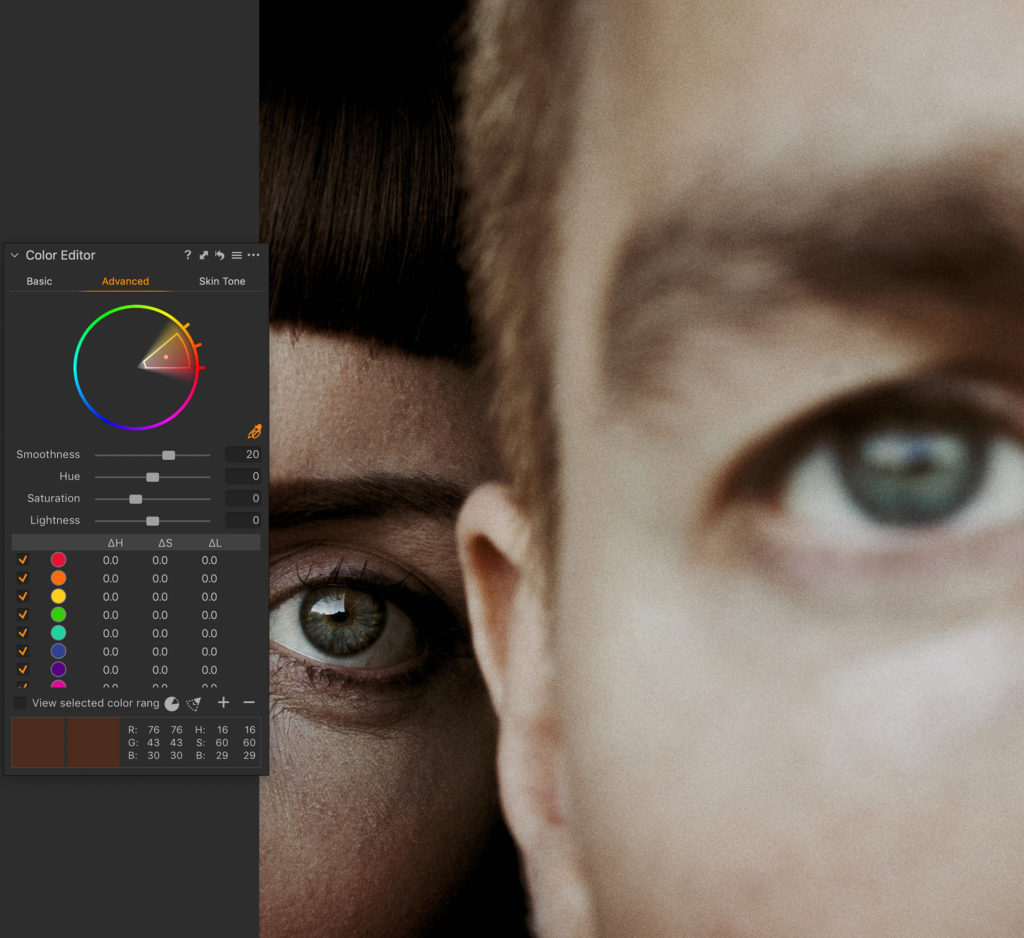
“One concern I’m still having is how do I cull images in C1 the fastest? In LR I used to work with the spray paint can tool and could quickly do my first selection. I haven’t found anything comparable in C1 and I’m quite sure I’m just not seeing the best option to cull yet. I’d love to have any ideas about this.” – Björn Lexius
Capture One:
What may confuse new users of Capture One about culling is that there are so many different ways you can do it. The fastest way is definitely by using keyboard shortcuts, either for color tags or star ratings, then simply using the arrow keys to navigate. If you need to view a lot of images in a grid view, you can hide the viewer (View > Viewer) which will show a large browser instead. Besides regular filtering, Capture One also has Smart Albums, which work like Smart Collections in Lightroom. You can set up different criteria to filter on images depending on rating, color tag or something completely different. There are many tutorials available on the Capture One Learning Hub about how to manage large amounts of images in Catalogs – check learn.captureone.com.

“At first glance, I was a bit confused on how to navigate in Capture One, but I quickly found out how to change the workspace layout to ‘Migration’ which is a more similar layout to Lightroom, which I usually use. This is actually the first thing I really like about Capture One: Being able to customize my workspace. I can set up my workspace however I want, add and remove the tools that I use in my editing and decide where I want my tools to be on the screen, my filmstrip, etc. Also, Capture One seems super fast.
I started off getting my ‘Curves’ right, which is pretty straight forward. Once that was done I had to figure out how to use the rest of the tools to match my usual editing style. Here I found the ‘Color Editor’ and ‘Color Balance’ tool extremely interesting. It’s more complicated than Lightroom’s “HSL” sliders and “Split Toning” – but only because you can do so much more than in Lightroom. Forget about just having ‘Hue,’ ‘Saturation’ and ‘Luminance’ for eight color controls, in Capture One it seems like the possibilities for color control are endless. By using the ‘Advanced’ color editor, you’re able to single out the exact color that you want to adjust – you can decide how big the color range is, that you want to edit. I found this extremely clever. It’s a little tricky to master at first, and I am sure I have much to improve, but I loved the possibilities the Color Editor ‘Advanced’ tab provides. The fact that Capture One works with layers + masks is also surprising when it comes to adjusting the colors. By brushing over certain areas and creating a mask, I could control the colors of a specific area without it affecting the rest of the image.
Will there be more presets coming out for Capture One like the Mastin Presets or maybe some converter for Lightroom presets? ” – Carolina Segre
Capture One:
Though we can’t share any details just yet, we hope to see many more high-end creators contributing Styles for Capture One, just like Mastin Labs. A preset converter for Light Room isn’t ideal because presets often have very precise color grading and even small changes can throw off an entire look – it seems there is too big a difference between how the tools work. The algorithms are simply not that easily converted between the two.
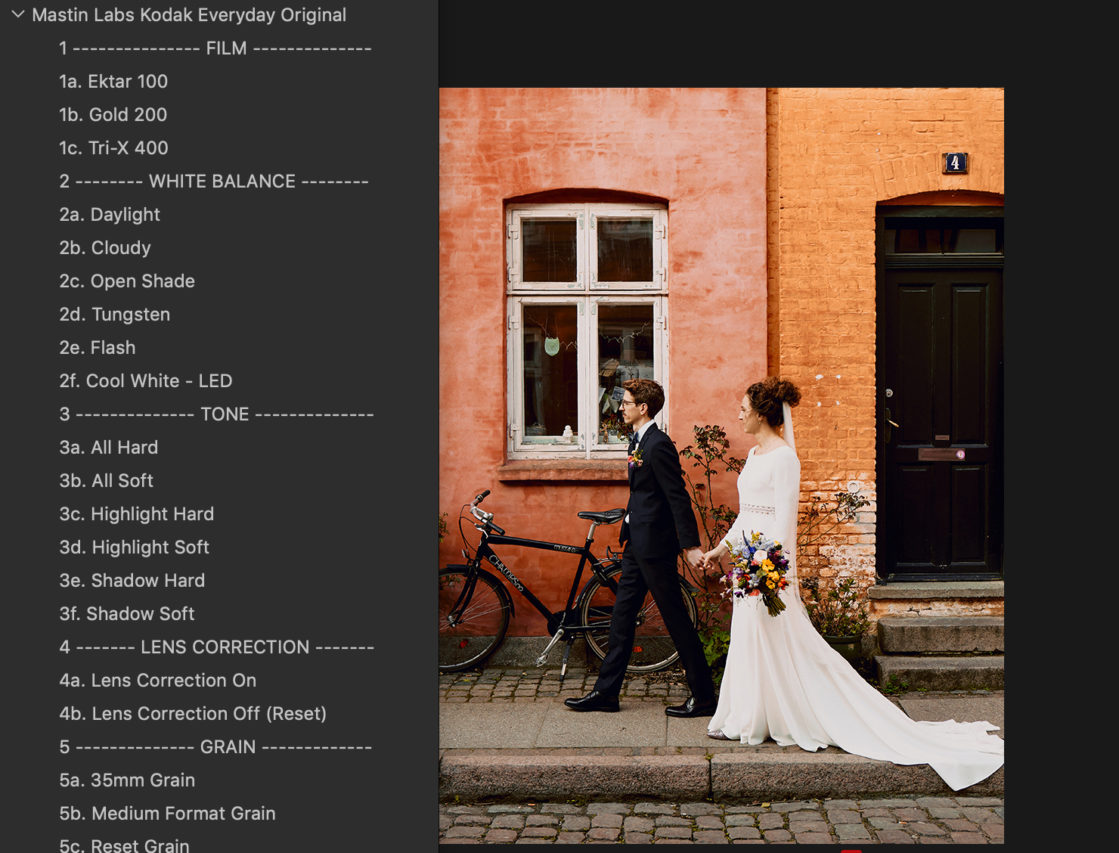
“I always use Split Toning in my photos when I work in Lightroom. In Lightroom, you can change the highlights and shadows, but in Capture One, you can adjust the midtones as well. I love this. Like with the Color Editor tool, this gives me much more control over my images.
I know there is so much more to explore with Capture One, but for my first go at it, I am really impressed. I’ve wanted to try Capture One for a long time, and I have to say it didn’t let me down. It’s not easy switching from one software to another. However, Capture One feels like a merge between Photoshop and Lightroom and I think if I spend the time to learn this software really well, it could be a real asset to my workflow. I am definitely intrigued! ” – Carolina Segre
Capture One:
We are really happy to hear you you are impressed with Capture One. We know that it takes time to pick up a new software but, switching over is made much easier with the resources available in our learning hub. Check out learn.captureone.com for hundreds of webinars, tutorials, blogposts and more.
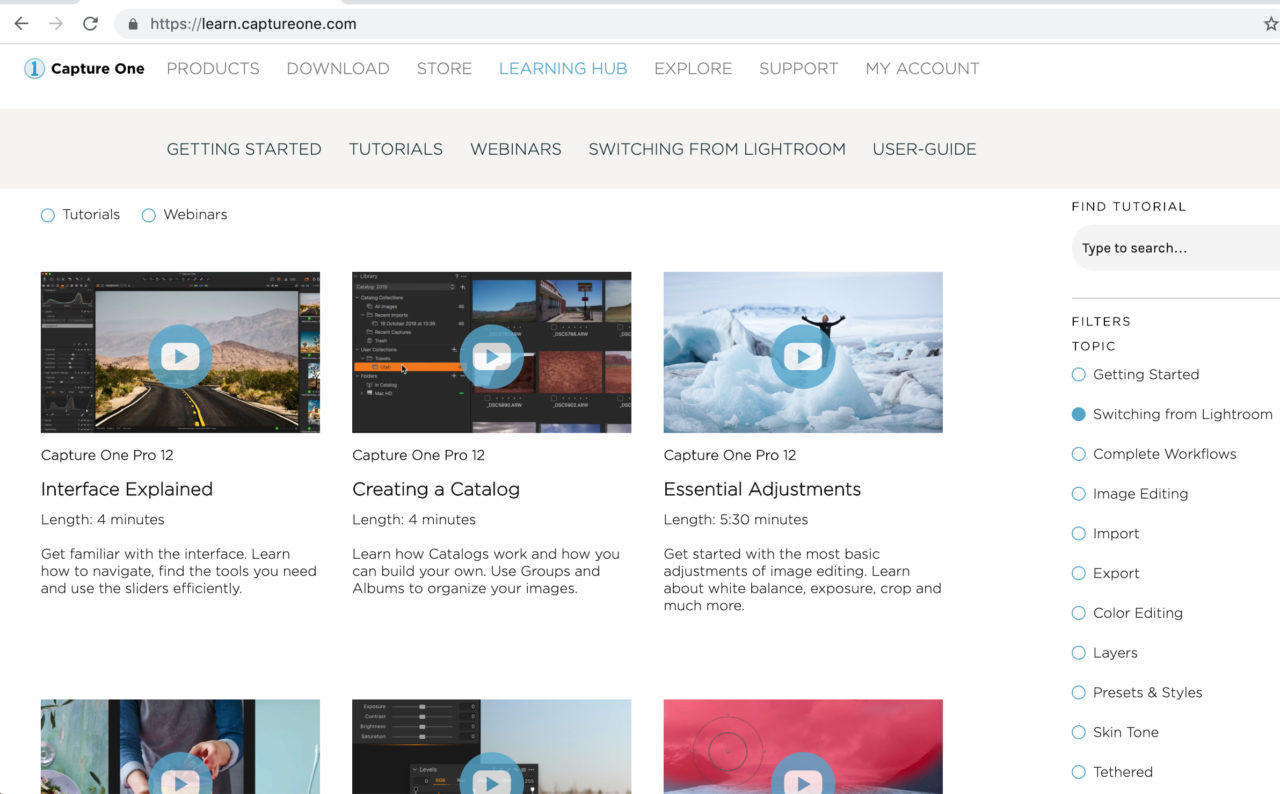
f you dont already have Capture One, you can download a free 30 day trial and try it out.

Lukas Piatek
My name is Lukas Piatek, and I am the founder of LOOKSLIKEFILM. We are a group of nearly 50K photographers that share fantastic work every single day: wedding images, family photos, boudoir sessions, even birth images. We support photographers from all fields, and this is why you can see everything in our group.

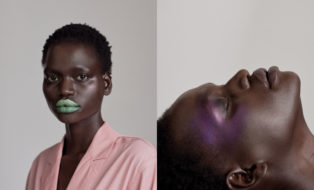


Hi Lukas, thank you for sharing this article. I am a wedding photographer getting into video as well. I am not quite brand new to C1, been using it for a little while, but still learning and discovering different ways to do things.
I know video LUTs are a different game, but is there a way to export presets or styles as LUTs for video? I am looking to get similar looks in my photos and videos. Thanks!
Capture One Pro is very good, unfortunately one STILL NEEDS Photoshop.
It would be nice if CO had the missing features that PS has, then we wouldn’t need to purchase two separate programs. Pity.
I am considering moving from Light Room/ Photoshop to Capture one. How easy is it to move all the photos from one LR/ PS catalogues to Capture one. Do all the adjustments to the photos seamlessly get converted?
I bought a new computer and did not install Lightroom(I also use PhotoshopElements). Instead, I installed Capture One Pro 12 and have made myself learn it as I did Lightroom. The most difficult part was importing photos to a Catalog..but I have figured that out and the rest is getting used to the different ways in C1 editing.
It’s just a matter of time and patience/practice, I’ll be sailing through C1 like I have Lightroom.
I really like the Custom Work Tools…. Or floating tools.
Exporting is a little tricky for me, but I do one at a time…for now.
All in all, I’m liking Capture One Pro 12.
The keyboard’s inherent design results in challenging, time consuming, and
typically unsuccessful lewindy dust cleaning mud – Freeman – efforts.